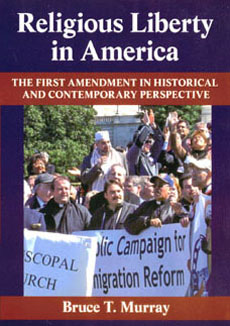*|MERGE4|*, *|MERGE5|*

|
|
|
| Redrawing the line between church & state |

Dear *|MERGE3|* *|MERGE2|*: President Barack Obama’s theme of “change” melds seamlessly with “same” in his recent re-establishment of former President Bush’s Faith-Based Initiatives program. The new White House Office of Faith-Based and Neighborhood Partnerships is a renamed version of George W. Bush’s Faith-Based and Community Initiatives. Obama’s faith-based program, like the former president’s, partners the federal government with religious organizations in the delivery of social services. And like Bush’s program, Obama’s initiative redefines the line separating church and state. 
The University of Massachusetts Press book, Religious Liberty in America: The First Amendment in Historical and Contemporary Perspective by Bruce T. Murray, takes a broad look at faith-based partnerships — from the Bush era to earlier historical models – reaching as far back as the Poor Laws of Elizabethan England. Religious Liberty in America provides political and legal analyses of the most recent faith-based experiments. Bush's initiative raised many constitutional issues — not only related to the First Amendment but also the theory of the “unitary executive.” Bush advanced his program at the presidential level, without new legislation or the support of Congress. “The Faith-Based Initiatives program has redrawn the line in the sand that separates church and state. Some say it crosses the line,” Murray writes. “The standoff has spurred an avalanche of lawsuits so numerous that faith-based initiative litigation is approaching its own sub-field of First Amendment law.” Murray further poses the questions: Can and should government rely on faith-based organizations, which at their core aim to transform lives through the power of God, to provide for the nation’s social service needs? And can this be done without trampling the long-held tradition of “no establishment” of religion? Moreover, can any president who professes a religious affiliation really practice “neutrality” in such matters?
Religious Liberty in America is available at numerous university libraries and the University of Massachusetts Press. Find out more about the author on SageLaw. |

